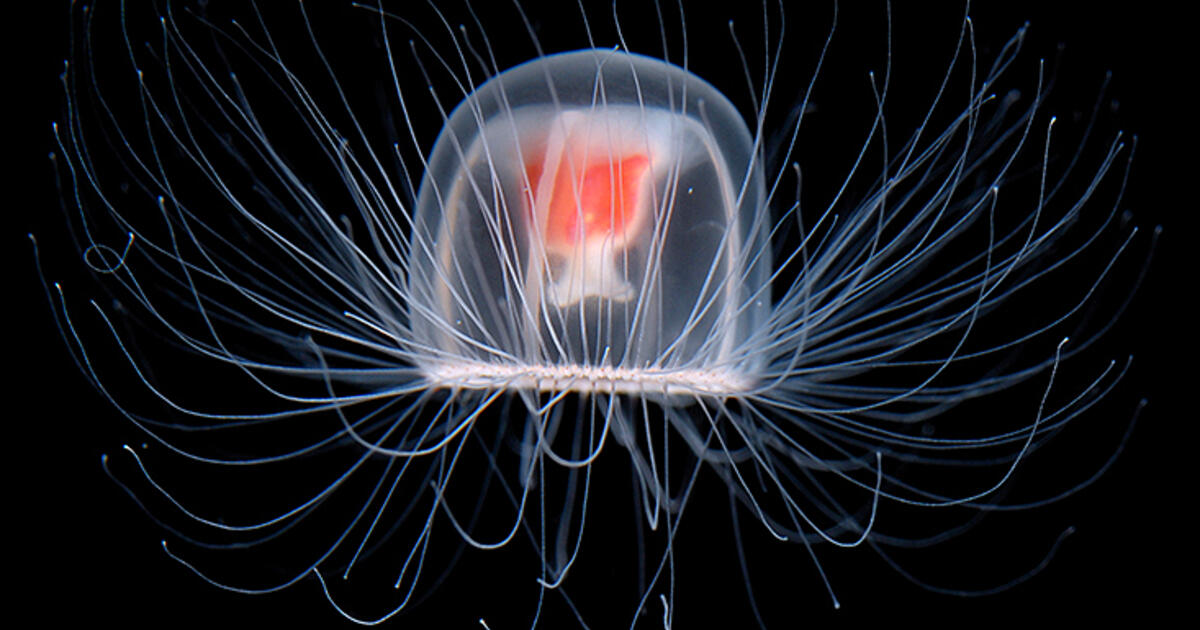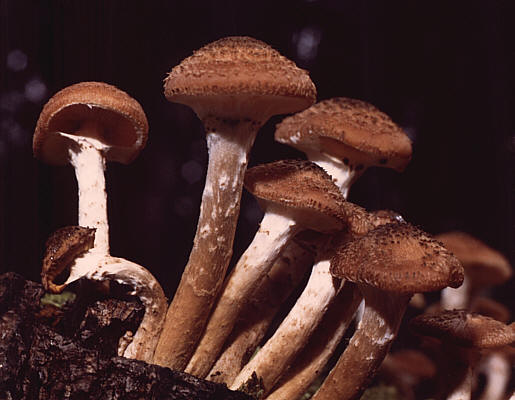Presenting One of the Most Amazing Organisms On Earth.
.
.
.
.
.
So, Let's Get Started.
Armillaria ostoyae (Largest Living Organism by Area)
Armillaria ostoyae, also known as the "Humongous fungus", is the record holder of being the largest organism in the world by area. The areal size of Humongous fungus is about 2,400 acres i.e. 9.6 square km. It is very common in the western region of the U.S. These are the type of parasitic fungi which depend on other plants of survival. Due to the easy availability of land and nutrients, Humongous fungus has grown to this extent.
Pando (Largest Living Organism by Mass)
Pando is the world's largest organism in the world by mass of all time. It is so big that it covers about 106 acres of land and weighs about 60,00,000 kg. It's estimated age is about 80,000 years. Populus Tremuloides is a scientific name given to this giant. Pando also has a record of being one of the oldest organisms in the world. These are commonly found in North America. But, Due to overgrazing, human interference, forest fires, and climate change, Pando is found to be not growing past 40 years. In 2006, It was declared as the "Wonders of America".
Turritopsis dohrnii (The Immortal Jellyfish)

Turriptopsis dohrnii is a jellyfish that is immortal as said by scientists. This jellyfish has a shape of bell having about 4.5 millimeters with 8 tentacles in young form and 80-90 in adult form. These jellyfish are all over the world from temperate to tropical water. Whenever this jellyfish gets hurt, it transforms itself into polpy form and gets settled on the bottom of the ocean. After settling down, new medusae are bud off from the polpy form. These medusae develop into jellyfish. In this way, Turriptosis dohrnii is immortal.
Snow Leopard (Beautiful Big Cat)
Do you remember the fierce leopard of Kung Fu Panda?
Snow Leopard is one of the most beautiful cats of the big cat family. These cats have lots of things that are just opposite of big cats. Snow Leopards are shy in nature and cannot roar. The fur of Snow Leopard is white and gray with black spots on the head and neck. These are found from 3,000 to 4,500m altitude range. Due to the estimated number of snow leopards less than 10,000, it has been listed IUCN Red List.
Deinoococcus radiodurans (World's Toughest Bacterium)
This is the toughest bacteria in the world. It has been listed in The Guinness Book of World Records. This bacteria is able to survive cold, acid, high temperature, vacuum, and even the strongest dose of radiation. That is why it is an extremophilic bacterium. This bacteria can handle 15,000 Gy of ionizing radiation. This happens because of the extraordinary ability to repair both single- and double-stranded DNA. It repairs breaks in its chromosomes within 12-24 hours by a two-step process.
Black Mamba (Most Dangerous Snake)
These snakes are worldwide popular for their black beauty and lethality. This is one of the most aggressive snakes in the world. Being the fastest and second-longest snake (up to 3m long) makes Black Mamba more dangerous than any snake. It can achieve a speed of 16 to 20 km/h (10-12 miles per hour). Its venom contains neurotoxins that show effects within 10 minutes after being bitten. These snakes live on both ground and trees. Like King Cobra, Black Mamba can raise its 40% of its body off the ground. There were incidents that even after giving anti-venom, 5 out of 38 people died. So, Never mess with a Black Mamba.
Thanks For Reading
Read More :
Pandemics Before Coronavirus That Shook The Whole World - Science Feed
Bored at Home ??? Best projects you can try out when bored - Science Feed
Will You Inject Yourself with an Ancient Bacteria for Longer Life ? - Science Feed
Never Miss A Post :
Facebook
.
.
.
.
.
So, Let's Get Started.
Armillaria ostoyae (Largest Living Organism by Area)
 |
| Image Credit: Wikipedia |
Armillaria ostoyae, also known as the "Humongous fungus", is the record holder of being the largest organism in the world by area. The areal size of Humongous fungus is about 2,400 acres i.e. 9.6 square km. It is very common in the western region of the U.S. These are the type of parasitic fungi which depend on other plants of survival. Due to the easy availability of land and nutrients, Humongous fungus has grown to this extent.
Pando (Largest Living Organism by Mass)
 |
| Image Credit: Wikipedia |
Pando is the world's largest organism in the world by mass of all time. It is so big that it covers about 106 acres of land and weighs about 60,00,000 kg. It's estimated age is about 80,000 years. Populus Tremuloides is a scientific name given to this giant. Pando also has a record of being one of the oldest organisms in the world. These are commonly found in North America. But, Due to overgrazing, human interference, forest fires, and climate change, Pando is found to be not growing past 40 years. In 2006, It was declared as the "Wonders of America".
Turritopsis dohrnii (The Immortal Jellyfish)

Turriptopsis dohrnii is a jellyfish that is immortal as said by scientists. This jellyfish has a shape of bell having about 4.5 millimeters with 8 tentacles in young form and 80-90 in adult form. These jellyfish are all over the world from temperate to tropical water. Whenever this jellyfish gets hurt, it transforms itself into polpy form and gets settled on the bottom of the ocean. After settling down, new medusae are bud off from the polpy form. These medusae develop into jellyfish. In this way, Turriptosis dohrnii is immortal.
Snow Leopard (Beautiful Big Cat)
 |
| Image Credit: Wikipedia |
Snow Leopard is one of the most beautiful cats of the big cat family. These cats have lots of things that are just opposite of big cats. Snow Leopards are shy in nature and cannot roar. The fur of Snow Leopard is white and gray with black spots on the head and neck. These are found from 3,000 to 4,500m altitude range. Due to the estimated number of snow leopards less than 10,000, it has been listed IUCN Red List.
Deinoococcus radiodurans (World's Toughest Bacterium)
 |
| Image Credit: Wikipedia |
This is the toughest bacteria in the world. It has been listed in The Guinness Book of World Records. This bacteria is able to survive cold, acid, high temperature, vacuum, and even the strongest dose of radiation. That is why it is an extremophilic bacterium. This bacteria can handle 15,000 Gy of ionizing radiation. This happens because of the extraordinary ability to repair both single- and double-stranded DNA. It repairs breaks in its chromosomes within 12-24 hours by a two-step process.
Black Mamba (Most Dangerous Snake)
 |
| Image Credit: Wikipedia |
These snakes are worldwide popular for their black beauty and lethality. This is one of the most aggressive snakes in the world. Being the fastest and second-longest snake (up to 3m long) makes Black Mamba more dangerous than any snake. It can achieve a speed of 16 to 20 km/h (10-12 miles per hour). Its venom contains neurotoxins that show effects within 10 minutes after being bitten. These snakes live on both ground and trees. Like King Cobra, Black Mamba can raise its 40% of its body off the ground. There were incidents that even after giving anti-venom, 5 out of 38 people died. So, Never mess with a Black Mamba.
Thanks For Reading
Read More :
Pandemics Before Coronavirus That Shook The Whole World - Science Feed
Bored at Home ??? Best projects you can try out when bored - Science Feed
Will You Inject Yourself with an Ancient Bacteria for Longer Life ? - Science Feed
Never Miss A Post :
